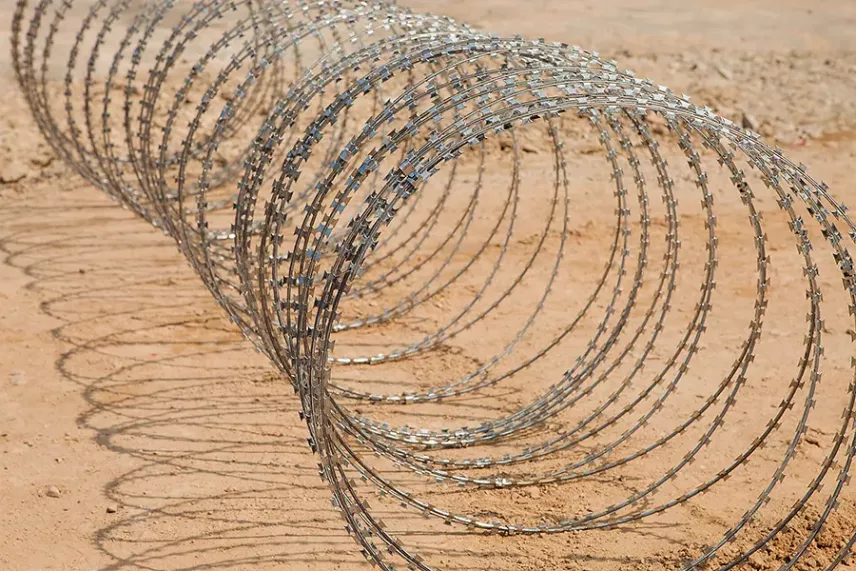
Concertina barriers are versatile physical security solutions used across both military and civilian environments. Thanks to their simple design, high effectiveness, minimal maintenance, and strong psychological deterrence, Concertina has become a core component of modern perimeter protection. It is deployed as a standalone obstacle, as reinforcement for existing fences, or as a temporary solution during operations and public events. This article explores the main application areas of Concertina, installation conditions in various environments, and the reasons why this barrier type remains so relevant and widely used.
Military Bases and High-Security Facilities
Originally developed for rapid deployment in combat situations, Concertina remains a standard for securing military perimeters, ammunition depots, testing grounds, and checkpoints. Its key advantages are rapid deployment and high effectiveness with minimal resource investment. Concertina can be installed permanently or used in mobile form to restrict access as needed. Its razor blades cause injury on contact, the spiral structure is difficult to cross, and its visual appearance deters intrusion. For locations requiring constant or elevated readiness, Concertina is an irreplaceable tool.
Industrial Sites and Critical Infrastructure
Factories, power stations, water facilities, logistics centers, and transport hubs all require protection from trespassers, theft, sabotage, and espionage. Concertina is ideal for securing such perimeters without the need for major construction. It can be installed independently or combined with existing barriers – mounted on concrete bases, fences, walls, or steel supports. Its durability and density make it suitable for both temporary and permanent use. It’s often installed along railway lines, around fuel tanks, and at access-controlled storage sites. The presence of Concertina reduces security risks and can even result in lower insurance premiums.
Prisons, Detention Centers, and Restricted Institutions
In correctional systems, Concertina is used to secure both outer and inner perimeters. Unlike basic barbed wire, it creates a serious physical and psychological barrier against escapes and contraband transfer. It’s typically installed in multiple lines – on main fences, between zones, along walkways. Dual or pyramid configurations are often used to form impassable corridors. Concertina is also integrated with surveillance cameras, alarm systems, and lighting. This setup has proven highly effective and aligns with international standards for correctional facility security.
Borders, Customs Zones, and Perimeter Control
Border security demands physical barriers that prevent unauthorized crossings. Concertina is widely deployed along national borders, both as temporary and permanent fencing. It can be installed on virtually any terrain – plains, hills, ravines, forests, or wetlands. Spirals may be mounted on posts or placed in trenches to prevent tunneling. In many deployments, Concertina is combined with electronic surveillance, motion sensors, and patrols. Its main purpose is to create a physical delay and provide enough time for an appropriate response.
Private Properties and Agricultural Land
While its roots are military, Concertina is increasingly used in the private sector. Homeowners, farmers, and landowners install it around the perimeter to protect against theft, trespassing, and wild animals. It can be mounted on top of fences, on poles, or directly on concrete foundations. Its compact size makes it practical even for small plots, and installation takes just a few hours. This is especially useful in areas with high crime rates or proximity to forests. The Concertina wire barrier forms a physical deterrent that cannot be casually crossed – tools, time, and intent are required.
Public Events, Temporary Zones, and Special Operations
Mobile versions of Concertina are used by police, military, security services, and private guards during public events, protests, searches, or emergency response. Spirals are mounted on frames, deployed by hand or from vehicles, and create an instant barrier in minutes. This allows the creation of secure zones without permanent infrastructure. Once the event ends, the barrier can be removed, packed, and reused. This flexible approach is essential in urban settings, strategic sites, and situations where fast perimeter control is needed.